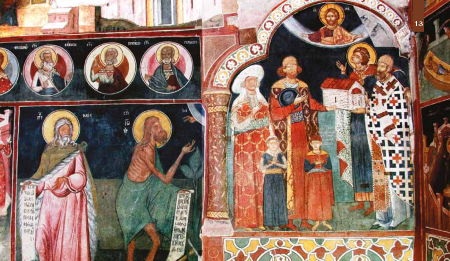Kremikovtsi Monastery of St George is located 2 km north of the suburb of Kremikovtsi (via an asphalt road) amidst a pine forest at the foot of the Balkan Mountains. The claim that it was established at the end of the Second Bulgarian Empire (14th c) has not been confirmed.
We know from the donor’s inscription that the monastery’s church was built and painted in 1493 with funds by the local boyar Radivoy. The Kremikovtsi Gospel (1497) and a local icon of Christ Pantocrator, kept at present at the Crypt of St Alexander Nevsky Cathedral, have survived from the same period.
The relics of St George the New of Sofia (+1515) were kept here. There was also a rich library with valuable manuscripts.
In the late 19th century, nuns from Macedonia settled here and in the early 20th century a larger new domed temple dedicated to the Protecting Veil of the Theotokos was erected.
The old church has been well restored, and the residential buildings are being renovated.

The frescoes of Kremikovtsi Monastery are a real paragon of Orthodox iconography.






